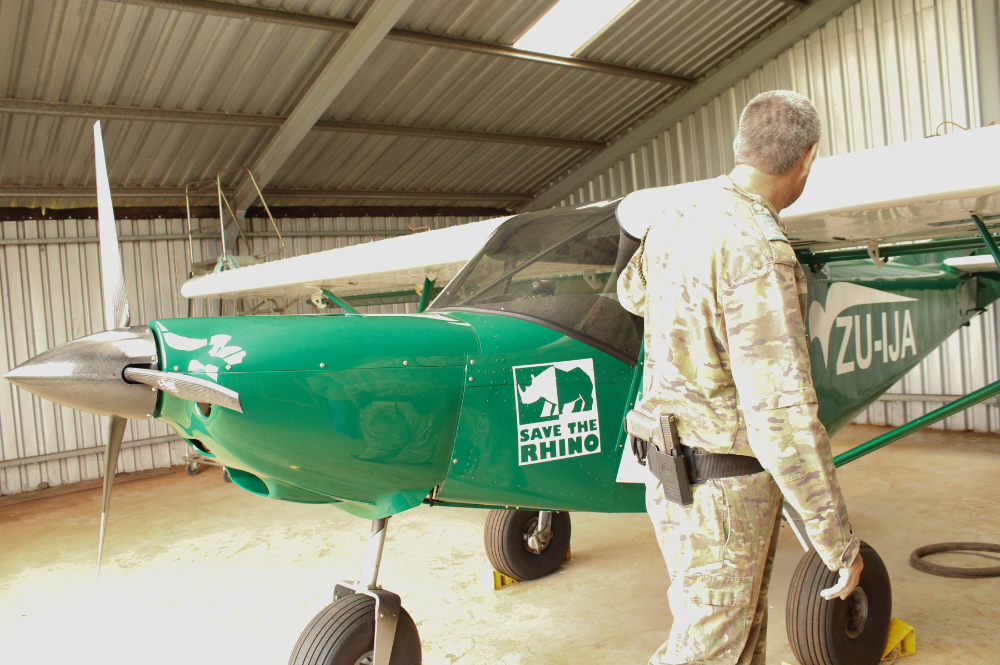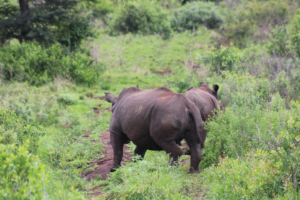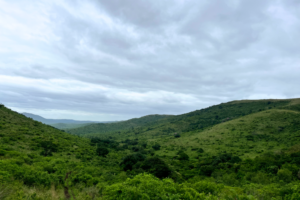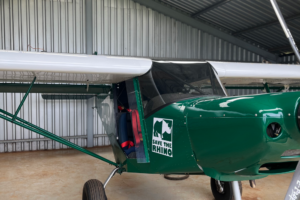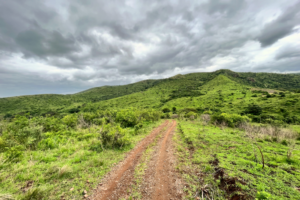Hluhluwe-iMfolozi Park’s (HiP) dense scrub, large predators and rocky terrain make traversing the Park on foot very tough. Every day on-the-ground ranger teams monitor and protect rhinos in this landscape yet, with so much area to cover, rangers cannot get to every point in the Park during every foot patrol. However, working in tandem with aerial support, the team can have a bigger impact on rhino conservation.
Once airborne, HiP’s Savannah S Light Sport Aircraft’s vital role comes to light: great distances can be covered within hours in what would otherwise take days. Surveying the Park for rhinos, and of course, poaching activities, the plane also acts as a deterrent to poaching gangs. Mid-flight, this fixed-wing aircraft has been used after gunshots have been heard, following up the report to determine if a rhino has been attacked. If – sadly – a poached rhino is found, the aircraft allows staff to quickly carry out follow-up operations including tracking suspects from the scene and post-mortem investigations. In addition, specialist satellite technology in the plane provides teams with the ability to obtain extremely accurate GPS coordinates of a point of interest by simply pushing a button. For example, during 2023, whilst flying over one section of the Park, the pilot detected a fresh rhino carcass, quickly forwarding its location to the Park’s Operations Room. Domestic hunting dogs were also located from the air and followed, leading the ground teams to the suspect’s house, where arrests were later made.
The aircraft also helped detect an orphaned rhino after a poaching incident, allowing the Game Capture Unit (GCU) to bring it in and care for it. Helpless and alone, the calf would otherwise have succumbed to starvation, competition, or predation.
Rhino monitoring activities have also been a key focus for the Savannah, which recently enabled more than 30 black rhinos to be identified in a single five-hour patrol. Photographing the rhinos’ unique ear notches during aerial counts can be a challenge, especially in tough weather conditions. However, HiP’s aerial team succeeded, supporting accurate population counts and complementing photographs that had already been taken by the dedicated black rhino monitoring team.
Given their different densities and habitat preferences in the Park, white rhinos are counted differently, using ‘sink counts’. By flying along designated flight tracks that transect the Park, white rhinos are counted along specific areas and then the population within a section is estimated from these counts. This method is repeated multiple times to increase accuracy, and with the support of the aircraft, HiP’s team has improved count accuracy by up to 20%.
But rhinos are not the only threatened wildlife species living in HiP, and – using unique telemetry equipment to find radio-collared individuals – the aircraft has occasionally helped to find lions and African wild dogs in the Park. Beyond HiP’s boundary, the Savannah has successfully aided efforts to find animals that have escaped, assisting the GCU to promptly bring them back before they harm people or livestock in neighbouring communities.
In the past two years, HiP’s rhinos have been under immense pressure from poaching, and this has also had a huge impact on rangers. Continuous planning and tactical interventions are in place, with support from the South African Police Service. Despite the extremely tough situation, anti-poaching teams continue to do as much as they can with the resources they have to protect HiP’s rhinos.
Thanks to your support, the Savannah S Light Sport Aircraft has continued to function as an eye in the sky throughout this time, and is an asset to Hluhluwe-iMfolozi’s team. Flight patrols have been undertaken regularly and running costs such as fuel, services, repairs and the maintenance of the hangar have been funded. However, fuel prices have almost doubled since this aerial surveillance project was established and there is even more need for more frequent aerial patrols due to poaching. The need for more support to counter this threat is needed now more than ever.








